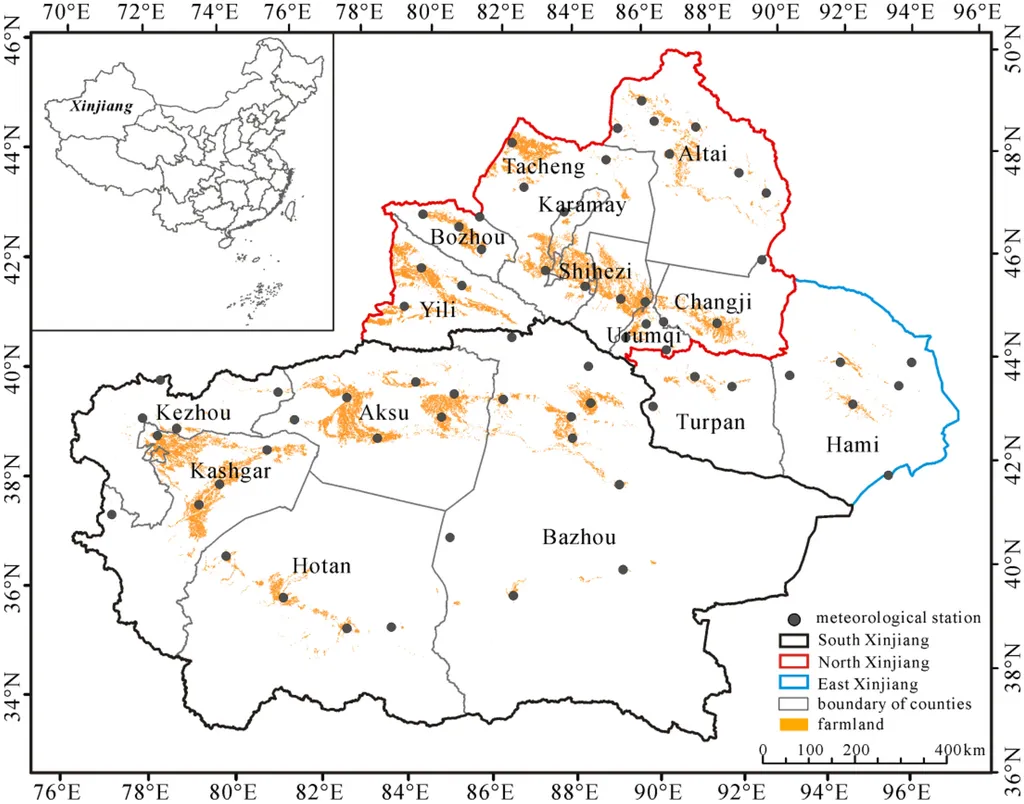In the vast, arid landscapes of Northwest China, where water is a precious commodity, a groundbreaking study has shed new light on the intricate dance between agriculture and water resources. Led by Yuqian Tang from the College of Geographical and Remote Sensing Sciences at Xinjiang University, the research, published in the journal *Agronomy* (translated as *Field Cultivation Science*), offers a comprehensive assessment of crop water resource utilization, providing a roadmap for sustainable agricultural practices in water-scarce regions.
The study, which spans two decades from 2000 to 2020, employs a multi-scale spatiotemporal analysis framework, combining the CROPWAT model with Geographic Information System (GIS) techniques. This sophisticated approach allows for a detailed examination of the crop water footprint—a critical indicator of agricultural water use—in the arid and semi-arid regions of Northwest China.
“Our findings reveal a ‘decline-increase-decline’ trend in the crop water footprint,” Tang explains. “It increased from 90.97 billion cubic meters in 2000 to a peak of 133.49 billion cubic meters in 2017, before declining to 129.30 billion cubic meters in 2020.” This fluctuation underscores the dynamic nature of water resource utilization in the region, driven by a complex interplay of factors.
One of the most striking revelations is the northward shift of the crop water footprint’s center, moving from northern Qinghai to southern Inner Mongolia. This shift is primarily attributed to rapid farmland expansion and increasing water consumption in the northern areas. The study identifies policy and institutional effects, along with economic development, as the primary drivers, contributing a substantial 49% to the changes observed.
The research also highlights the persistent water pressure in the region, despite a decrease in reliance on blue water (surface and groundwater). “Sustainable use was achieved in only half of the study years,” Tang notes, emphasizing the ongoing challenge of water scarcity.
The implications of this research extend far beyond the borders of Northwest China. In an era where water scarcity is a global concern, the study offers valuable insights into the driving forces behind agricultural water use and the potential for sustainable water resource management. For the energy sector, which often competes with agriculture for water resources, this research provides a crucial understanding of water use patterns and the impact of policy and economic factors.
As we look to the future, the findings of this study could shape the development of water management strategies, not only in arid regions but also in other water-scarce areas around the world. By enhancing water use efficiency and promoting sustainable practices, we can strive towards a more balanced and resilient agricultural sector, ensuring food security for future generations.
In the words of Yuqian Tang, “This study offers a theoretical basis and policy recommendations to enhance water use efficiency, develop effective management strategies, and promote sustainable water resource utilization.” As we grapple with the challenges of climate change and water scarcity, the insights gleaned from this research will be invaluable in our quest for a more sustainable future.

